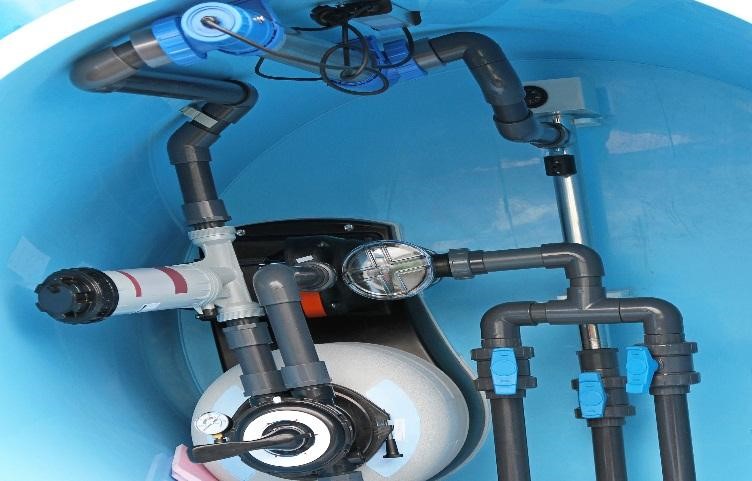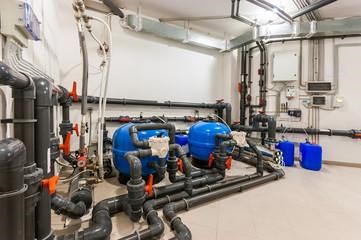Can Pool Heaters be Installed Inside?
Can Pool Heaters be Installed Inside?

Indoor swimming pools have always been popular, especially in areas where cold winters take away the fun of swimming outdoors. Not only are indoor pools more comfortable to maintain, since there is little debris to find its way into the water, but you can also enjoy a swim regardless of the weather; especially if you have the right pool heater installed.
“If it is a good idea to have your swimming pool indoors,” some pool owners ask, “can a swimming pool heater be installed inside?” As much as it may seem like a good idea to locate all of your pool heater indoor, your heat pump should remain in the great out-of-doors. Let’s see why. We will start by briefly discussing how a heat pump works.
A swimming pool heat pump, in the simplest terms, pulls heat from the surrounding air and transmits that heat into the pool water. The typical residential swimming pool heater requires a large amount of fresh air to transfer heat correctly. The system refrigerant pulls heat out of the air, making the refrigerant warmer. The heat pump then transmits this heat to the pool water, also making it warmer. The air leaving the system is typically 8-12 degrees cooler than the air entering the system.

If the pool heater were installed indoors in a closed environment, it would re-circulate the same air, instead of using fresh air. Consequently, the indoor air would quickly be cooled, and the unit would soon shut down since it would no longer be able to draw sufficient heat from the surrounding air.
In other applications, understanding the need for fresh air to supply the swimming pool heat pump, installers have attached ductwork to units to remove the cold air leaving the unit and to bring fresh, warmer air to the system. Though, the propeller style fans used to move air through the system are not designed to work against any significant resistance to airflow, which is exactly what a duct system presents. This resistance to the free flow of air through the heat pump results in loss of performance and potential component failure. Thus, using ductwork to move air to and from an indoor pool heater is not a viable solution.
If you feel you have no choice except to install your pool heaters inside the pump, you should contact the manufacturer of your unit and advise them of your situation. They may be able to assist you with a solution, but very seldom can units be made to work well indoors. If you insist on installing your swimming pool heater inside, you MUST provide a way to supply 3,500 CFMs of fresh air to your unit.
